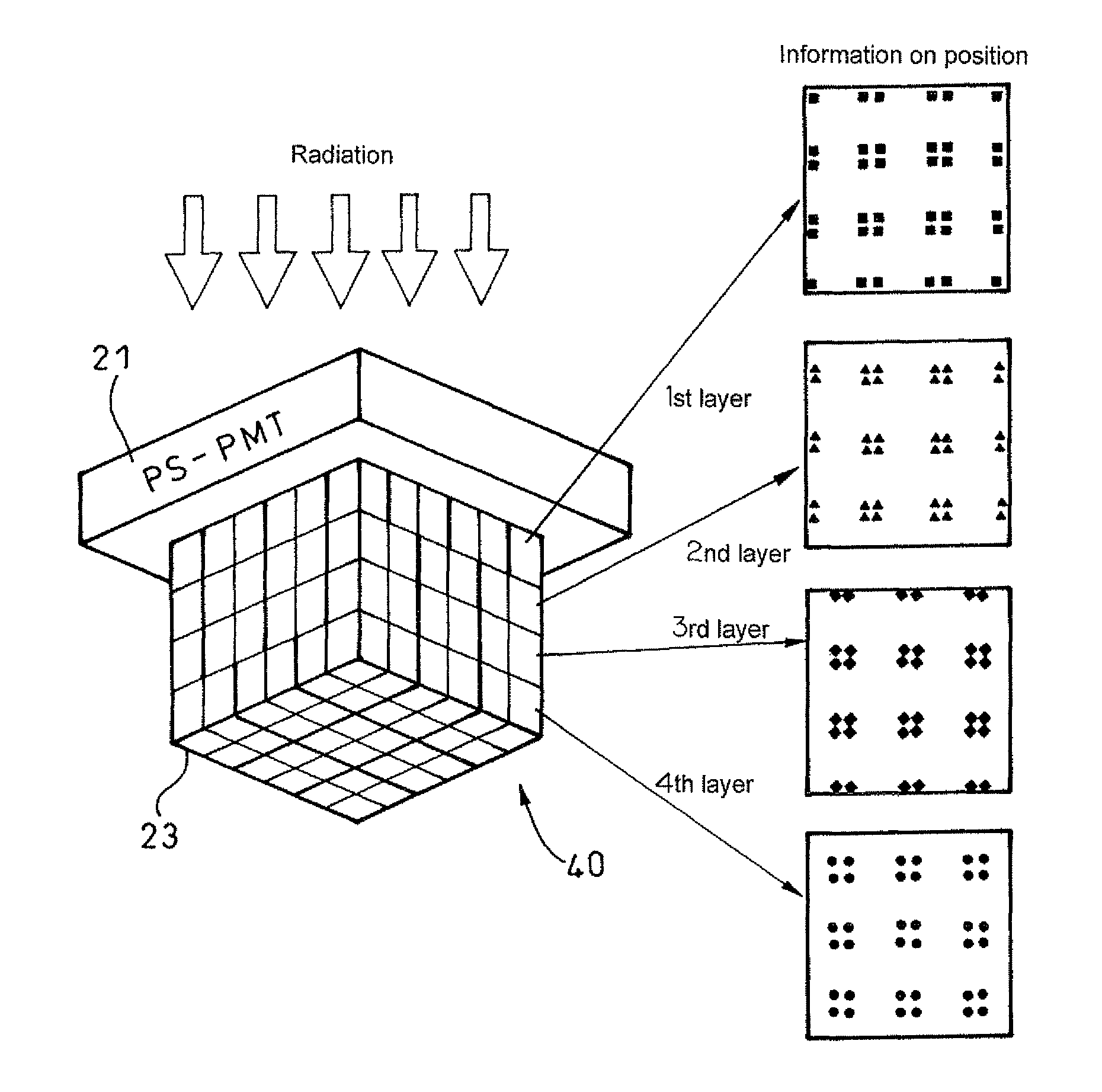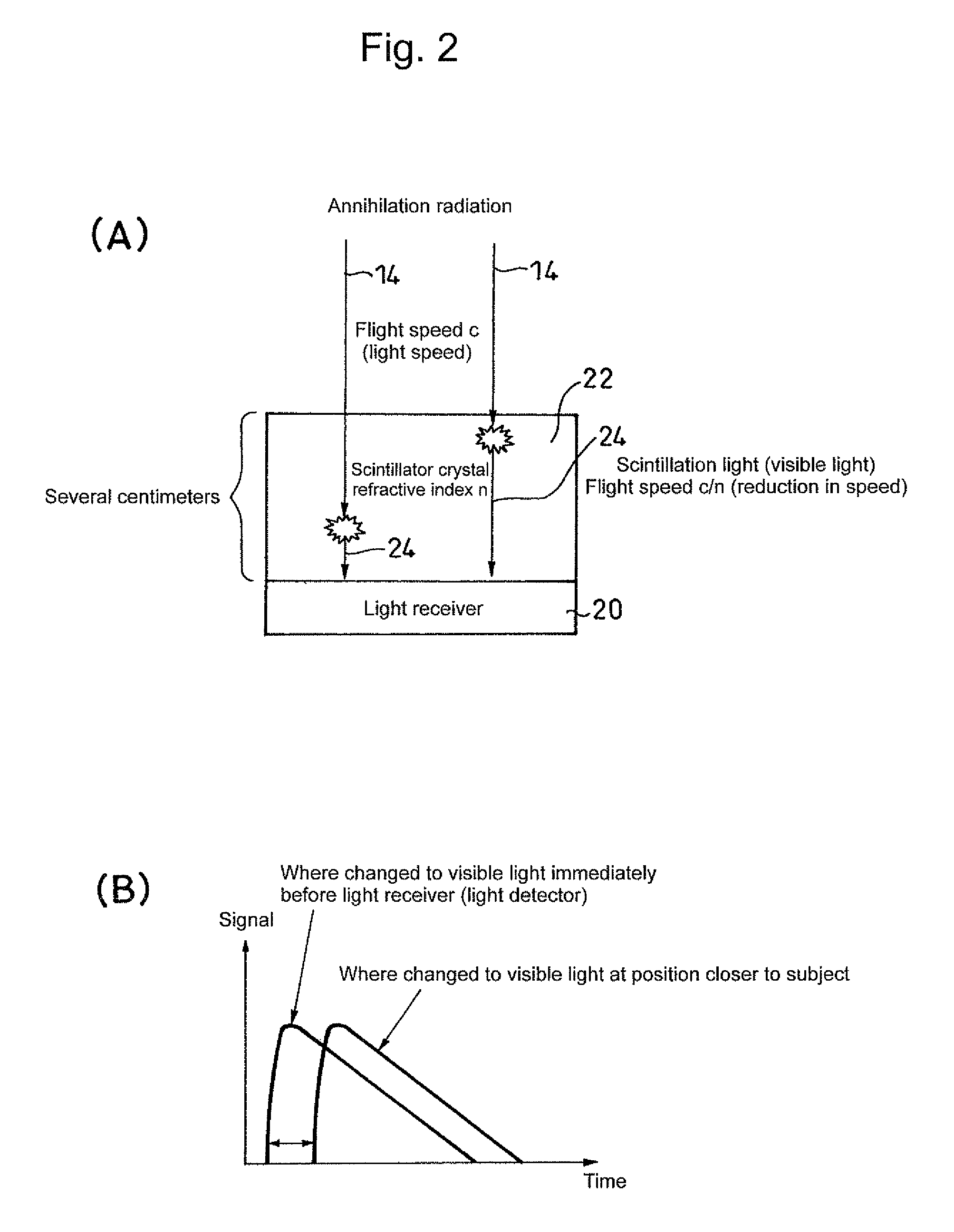Method for detecting radiation, device thereof, and positron emission tomography scanner
a tomography and radiation detection technology, applied in tomography, x/gamma/cosmic radiation measurement, instruments, etc., can solve the problem of deviation of time determined by a difference in whether a signal rises abruptly or slowly, and no improvement in the signal-to-noise ratio
- Summary
- Abstract
- Description
- Claims
- Application Information
AI Technical Summary
Benefits of technology
Problems solved by technology
Method used
Image
Examples
embodiment 1
[0056]As shown in FIG. 14, Embodiment 1 of the present invention is a positron emission tomography scanner in which PMTs 31 are arrayed on the side of a patient, which is a radiation source, scintillators 34 are disposed via light guides 32 outside thereof, and processing circuits 36 at a back stage connected with each of the PMTs 31 are used to identify an incident position, incident time and energy of radiation made incident.
[0057]Thereby, it is possible to enhance time resolution and energy resolution.
[0058]In the present embodiment, the light guide 32 is installed and a diameter of the light-emitting light path on the side of the PMT 31 is narrowed down with respect to a diameter of the incident light path on the side of the scintillator 34, thus making it possible to arrange the scintillators 34 and the PMTs 31 without any clearance left.
embodiment 2
[0059]In addition, types of the radiation detector are not limited to a DOI detector. shown in FIG. 15, the scintillators 34 are not stacked in four layers but may be made into a thick one layer, two or three layers, or more than five layers, or the light guide 32 is omitted and the PMT 31 may be directly disposed on the side of a radiation source of the scintillator 34. For example, where the PMT 31 is sufficiently thin or where radiation detectors are not required to be arranged densely, no light guide is needed. Where the light guide is not needed, it is preferably omitted.
embodiment 3
[0060]Further, a combination of the scintillators 34 with the PMTs 31 is not limited to one stage. shown in FIG. 16, the scintillators 34 are changed in constitution for every stage and can be disposed in a multiple stage. Here, it is acceptable that a relationship between the scintillators 34 and the PMTs 31 is on a one to one basis, on a many to one basis, on a one to many basis and on a many to many basis.
PUM
 Login to View More
Login to View More Abstract
Description
Claims
Application Information
 Login to View More
Login to View More - R&D
- Intellectual Property
- Life Sciences
- Materials
- Tech Scout
- Unparalleled Data Quality
- Higher Quality Content
- 60% Fewer Hallucinations
Browse by: Latest US Patents, China's latest patents, Technical Efficacy Thesaurus, Application Domain, Technology Topic, Popular Technical Reports.
© 2025 PatSnap. All rights reserved.Legal|Privacy policy|Modern Slavery Act Transparency Statement|Sitemap|About US| Contact US: help@patsnap.com



